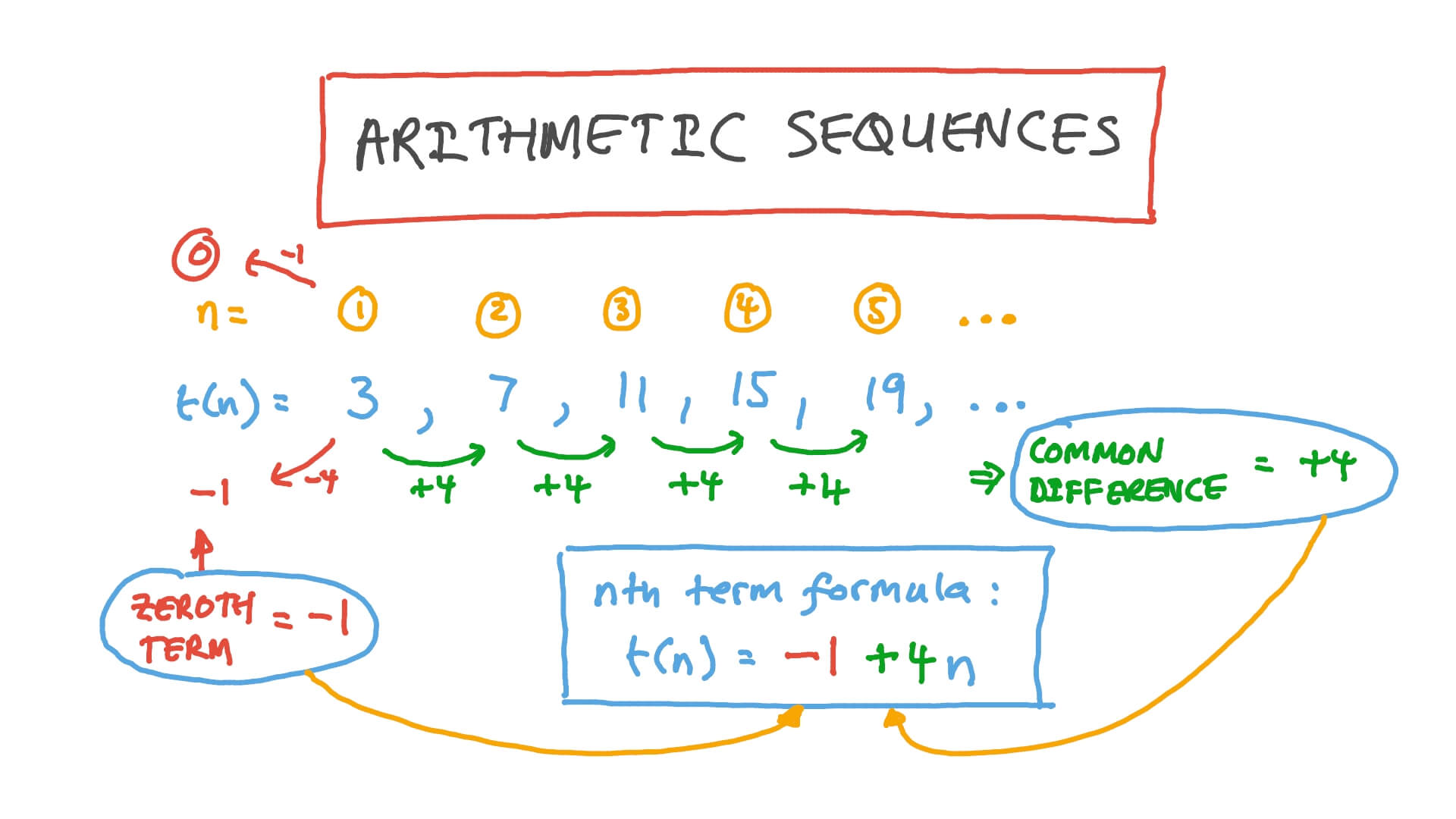arithmetic sequence definition with examples

Learning arithmetic is a fundamental part of math education, and it is often one of the first topics that
students are taught. However, once you get beyond the basics of addition, subtraction, multiplication,
and division, things can start to get a bit more complicated. In this article, we’ll share some expert tips
on how to tackle arithmetic sequences – so you can ace those math tests with ease!
Arithmetic Sequence Basics
arithmetic sequence is a mathematical progression in which each new element is derived by adding a
constant value to the preceding element. For example, the sequence 1, 3, 5, 7, 9,… is an arithmetic
sequence with a common difference of 2 (the value we add to each element to get the next element in
the sequence).
Arithmetic sequences are often used in mathematical and scientific applications. For example, they can
be used to model physical phenomena such as population growth or the decay of radioactive materials.
They can also be used to solve problems in algebra and calculus.
There are a few basic properties of arithmetic sequences that you should know. First, the sum of any
number of consecutive terms in an arithmetic sequence is called an arithmetic series. Second, the terms
in an arithmetic sequence always have a linear relationship; that is, they can be graphed in a straight
line. Finally, if we know the first term and the common difference in an arithmetic sequence, we can
calculate any other term in the sequence using a simple formula:
term = term1 + (n – 1)d
where the term is the nth term in the sequence, term1 is the first term, and d is the common
Sequence Tips and Tricks
If you’re looking for some tips and tricks on how to work with arithmetic sequences, then this blog post
is for you! We’ll go over some of the basics of working with arithmetic sequences, as well as some hacks
that only the pros know. So whether you’re a math beginner or a seasoned pro, there’s something here
for you. Let’s get started!
The first thing to know about arithmetic sequences is that they follow a specific pattern. Each number in
the sequence is called a term, and the terms increase or decrease by a fixed amount each time. For
example, in sequences 2, 4, 6, 8, and 10, the terms increase by 2 each time. This fixed amount is called
the common difference.
Now that we know the basics of arithmetic sequences, let’s take a look at some tips and tricks.
One hack that can be helpful is to find the sum of an arithmetic sequence. This can be useful
if you’re trying to calculate something like how much money you would have after investing a certain
amount each month for X number of months. To find the sum of an arithmetic sequence, you’ll need to
use the formula:
S = n/2 *
Sequence Problems
If you’re anything like me, then you’ve probably struggled with arithmetic sequences at some point in
your life. Whether it’s finding the nth term of a sequence or solving word problems, these types of
questions can be downright confusing and frustrating. But never fear! I’m here to share some tips and
tricks that will help you hack your way through arithmetic sequences.
One of the most important things to remember when dealing with arithmetic sequences is the
difference between an explicit and a recursive formula. An explicit formula is a mathematical equation
that allows you to calculate the value of any term in a sequence, given the values of the previous terms.
A recursive formula, on the other hand, defines each term in a sequence in terms of the one before it.
So, if you are ever stuck on a problem, be sure to ask yourself which type of formula you need to use.
Another helpful tip is to make sure you understand what each term in a sequence represents. In an
arithmetic sequence, each term is equal to the previous term plus a constant value (the common
difference).
Sequence in the Real World
If you’re anything like me, then you love finding new ways to use math in the real world. That’s why I
was excited to learn about arithmetic sequences and how they can be used to solve all sorts of
problems.
Arithmetic sequences are all around us, from the Fibonacci sequence found in nature to the days of the
week. By understanding a few simple hacks, we can use them to make our lives easier. Here are a few of
my favorites:
1. To find the next number in an arithmetic sequence, simply add the common difference to the last
number. For example, if the common difference is 3 and the last number is 6, then the next number
would be 9 (6 + 3).
2. You can also use arithmetic sequences to predict future events. For example, if you know that your
electricity bill goes up by $10 every month, you can predict that your bill next month will be $110 ((10 x
11) + 100).
3. Arithmetic sequences can also be used to estimate large numbers. For example, if you wanted to
estimate the population of the United States, you could use an arithmetic sequence with a common
difference of 30 million.
Conclusion
These arithmetic sequence hacks are sure to help you solve problems faster and more efficiently. With a
little practice, you’ll be able to see patterns in sequences that will help you solve complex problems in
no time at all. So what are you waiting for? Start practicing these hacks today and become an arithmetic pro!